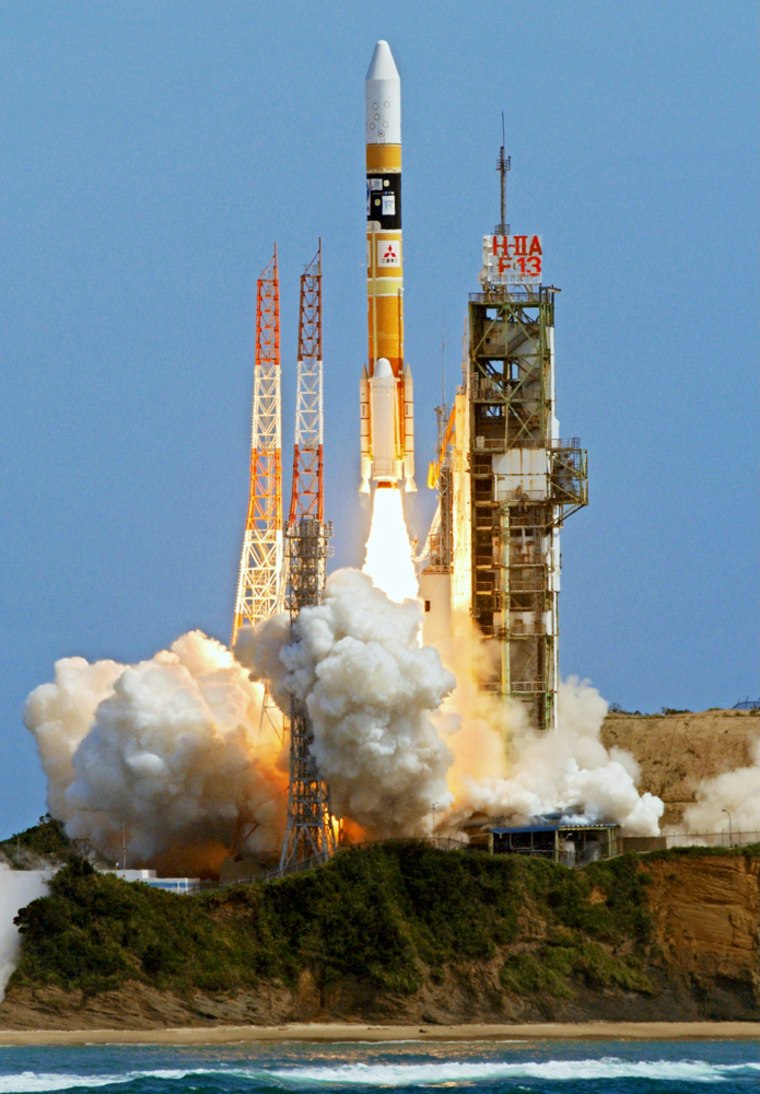After a number of delays, Japan's space agency has launched its first lunar orbiter, marking the latest move in an international race to explore the moon.
The Japan Aerospace Exploration Agency, or JAXA, is calling the Kaguya project the most ambitious mission to the moon since the Apollo flights, more than three decades ago. The $479 million mission is also known as SELENE, or Selenological and Engineering Explorer.
The rocket carrying the three-ton orbiter took off into blue skies, leaving a huge trail of vapor over the tiny island of Tanegashima, about 1,000 km (620 miles) south of Tokyo, at 10:31 a.m. Friday (9:31 p.m. ET Thursday) as it headed out over the Pacific Ocean.
The long-delayed lunar explorer separated from the rocket in skies near Chile about 45 minutes after liftoff. After bridging a 237,500-mile (380,000-kilometer) gulf, the main orbiter is to circle the moon at an altitude of about 60 miles (100 kilometers) and deploy two smaller satellites in polar orbits.
Researchers will use data gathered by the probes to study the moon's origin and evolution.
Japan launched another probe in 1990, but that was a flyby mission.
This week's liftoff marked Japan's latest move in a new race with China, India and the United States to explore the moon. "If we succeed in this program, we will be able to prove that Japan has the technology," mission scientist Tatsuaki Okada said.
JAXA has said it hopes to send astronauts to the moon by 2025, although Japan has not yet attempted human spaceflight.
In addition to its scientific instruments, Kaguya carries a high-definition television camera to shoot the Earth "rising" from the moon's horizon, with the footage sent back to Earth. Kaguya will orbit the moon for about a year until it runs out of fuel.
The launch is about four years behind schedule due to rocket failures and technical glitches.
China plans to launch a lunar orbiter called Chang'e 1 in the second half of this year to take three-dimensional images, and it aims to land an unmanned vehicle on the moon by 2010.
India is planning its first unmanned mission to orbit the moon in 2008, powered by a locally built rocket. It is also discussing sending a person to the moon by 2020.
The United States plans to launch a lunar orbiter next year.
Japan's space program was in tatters in the late 1990s after two unsuccessful launches of a previous rocket, the H-2. Disaster followed in 2003 when Japan had to destroy an H-2A rocket carrying two spy satellites minutes after launch as it veered off course.
This report includes information from The Associated Press and Reuters.
